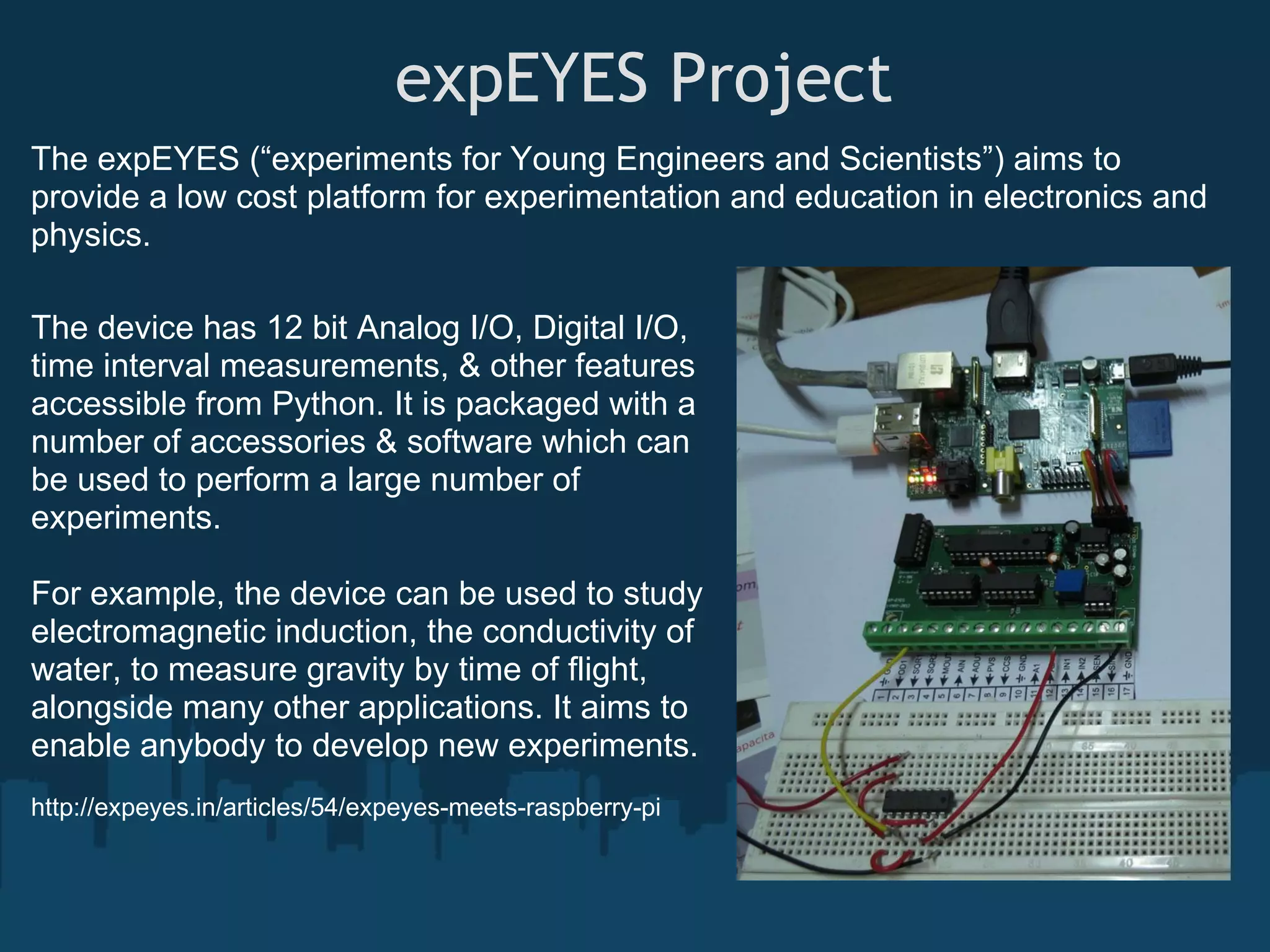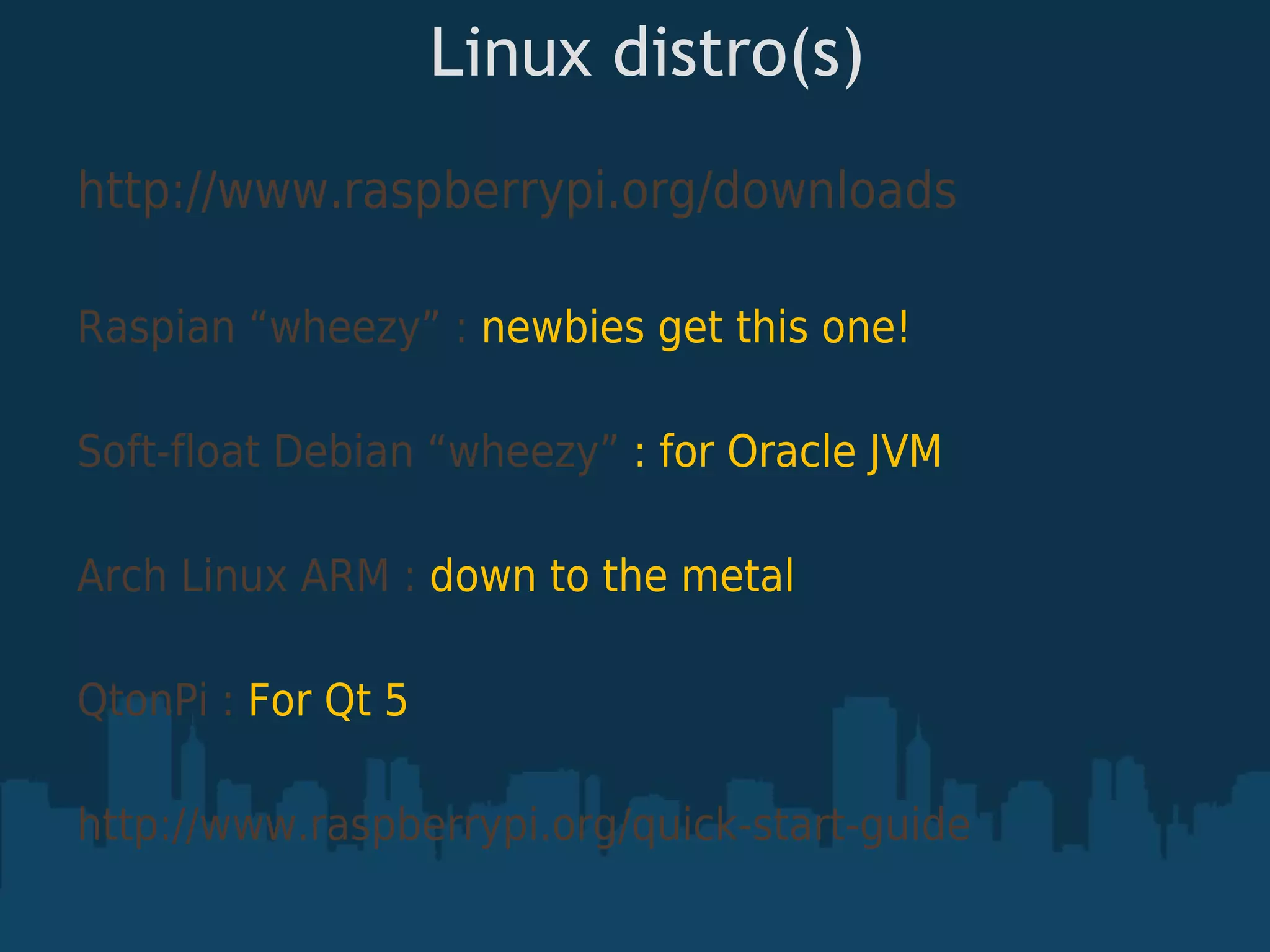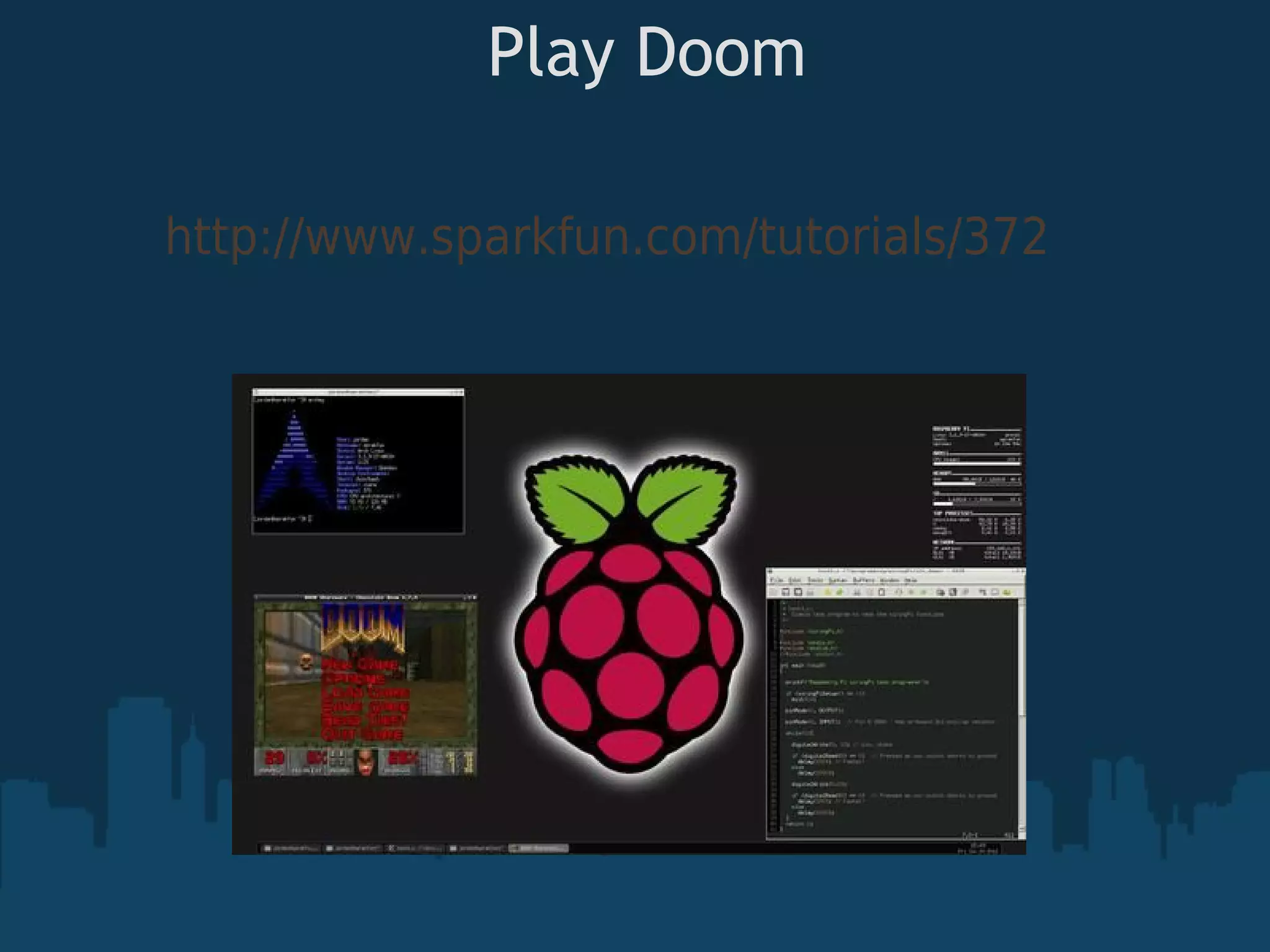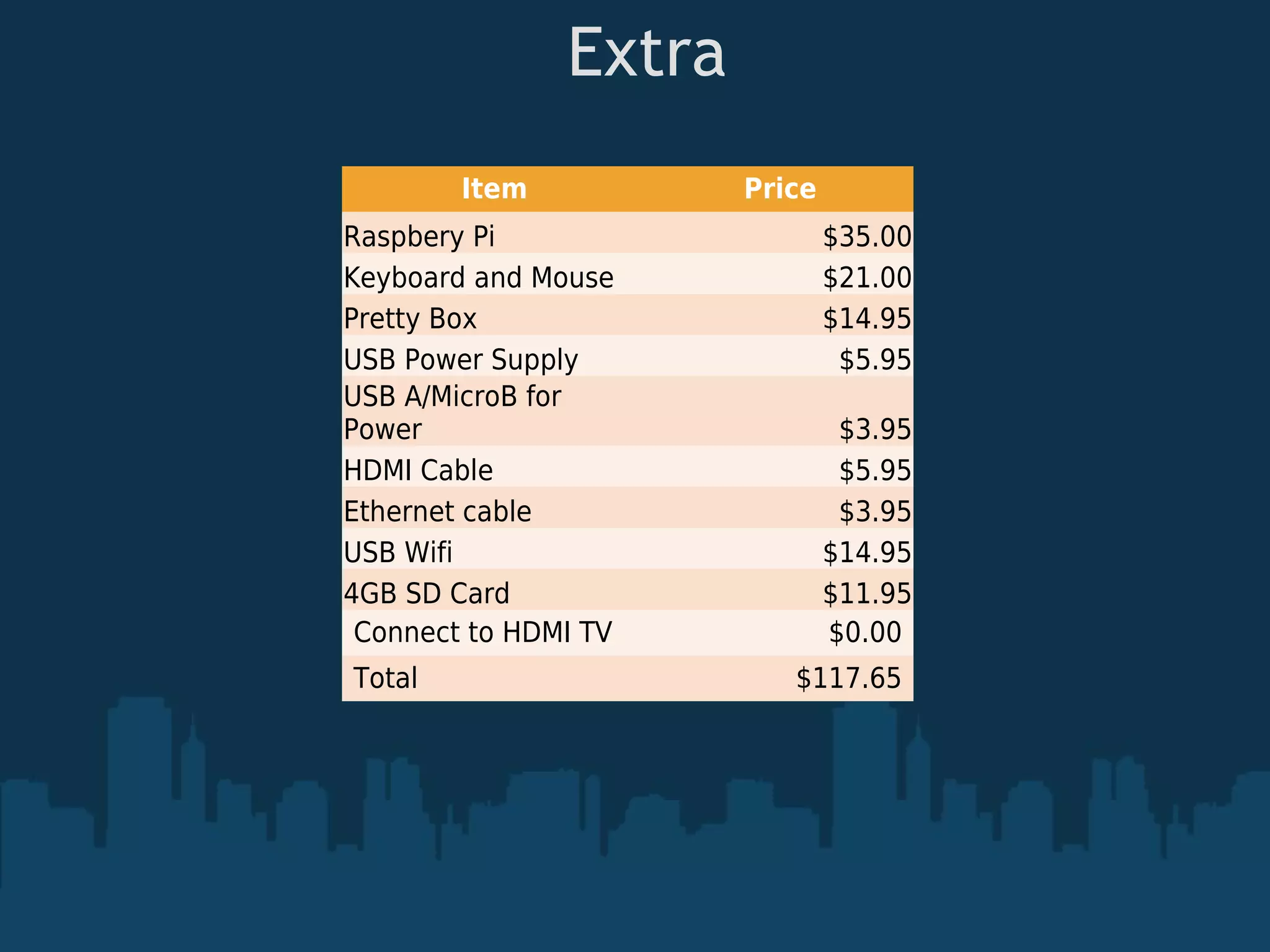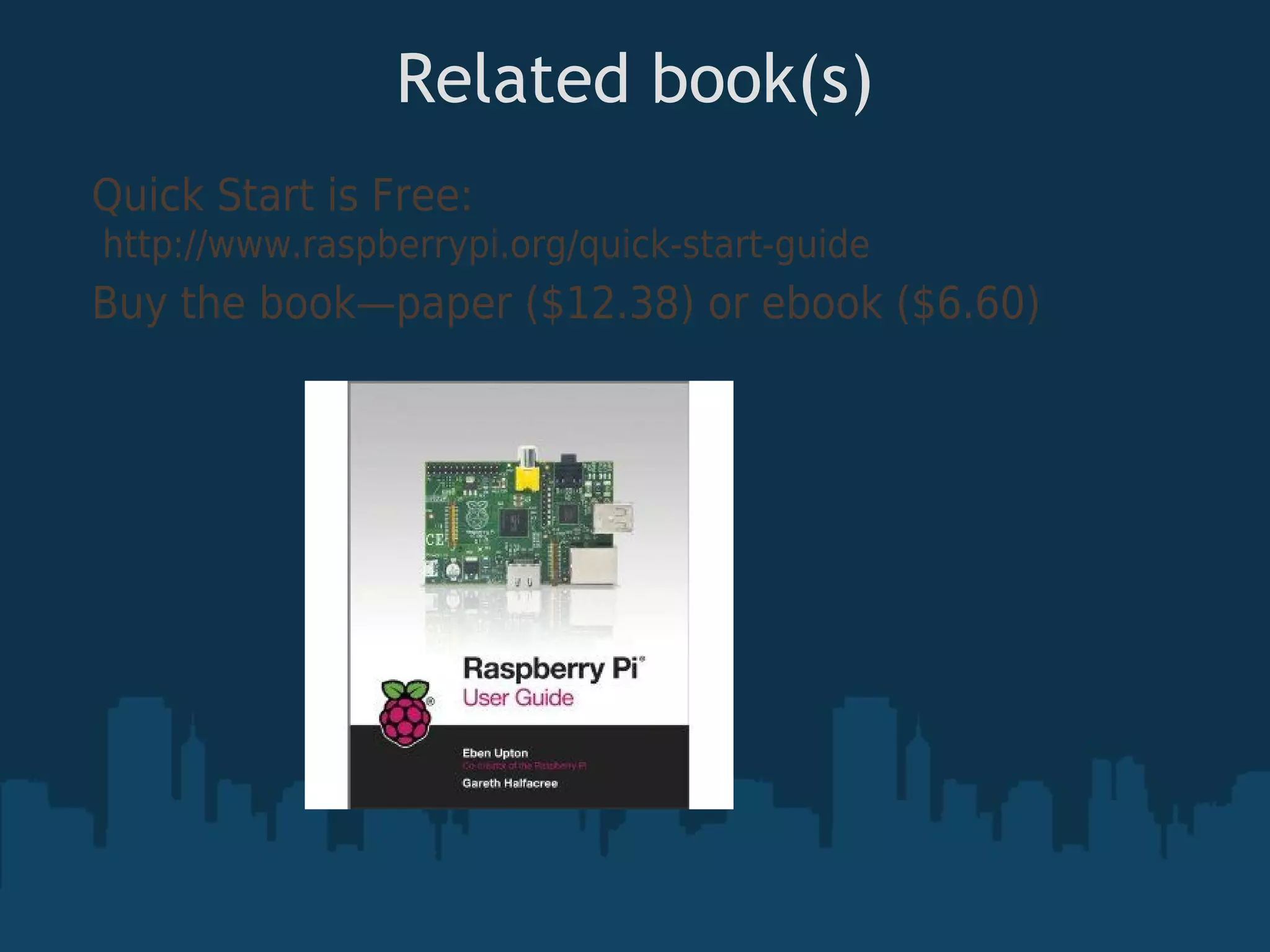The document provides an introduction to the Raspberry Pi board. It discusses the history and creation of the Raspberry Pi to inspire children to learn programming. It then describes the specifications of the Model A and Model B boards, including the processor, RAM, ports, and price. Finally, it outlines some of the things the Raspberry Pi can be used for, such as playing videos, serving as a desktop or server, and interfacing with electronics, as well as development options and related projects.
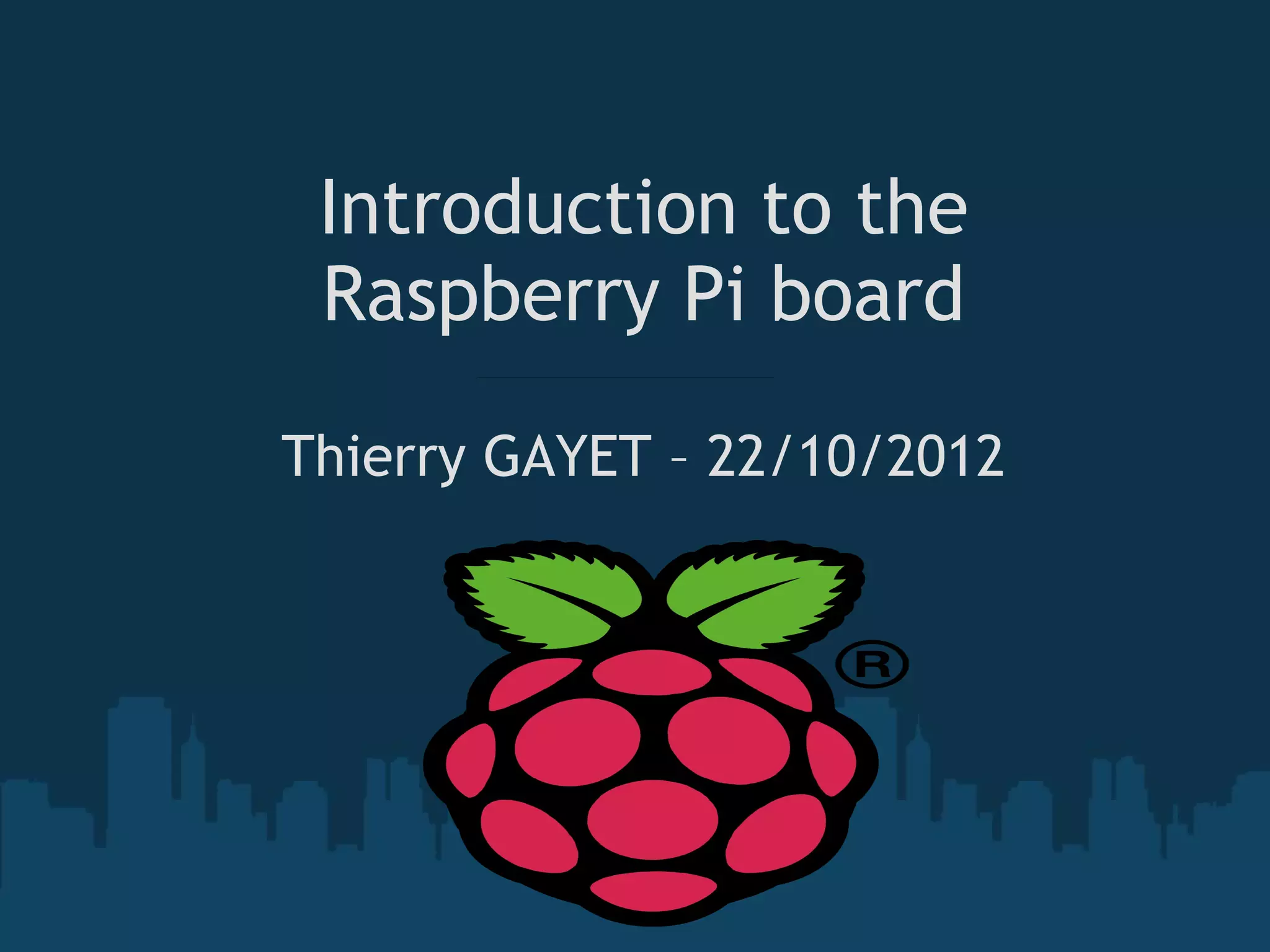
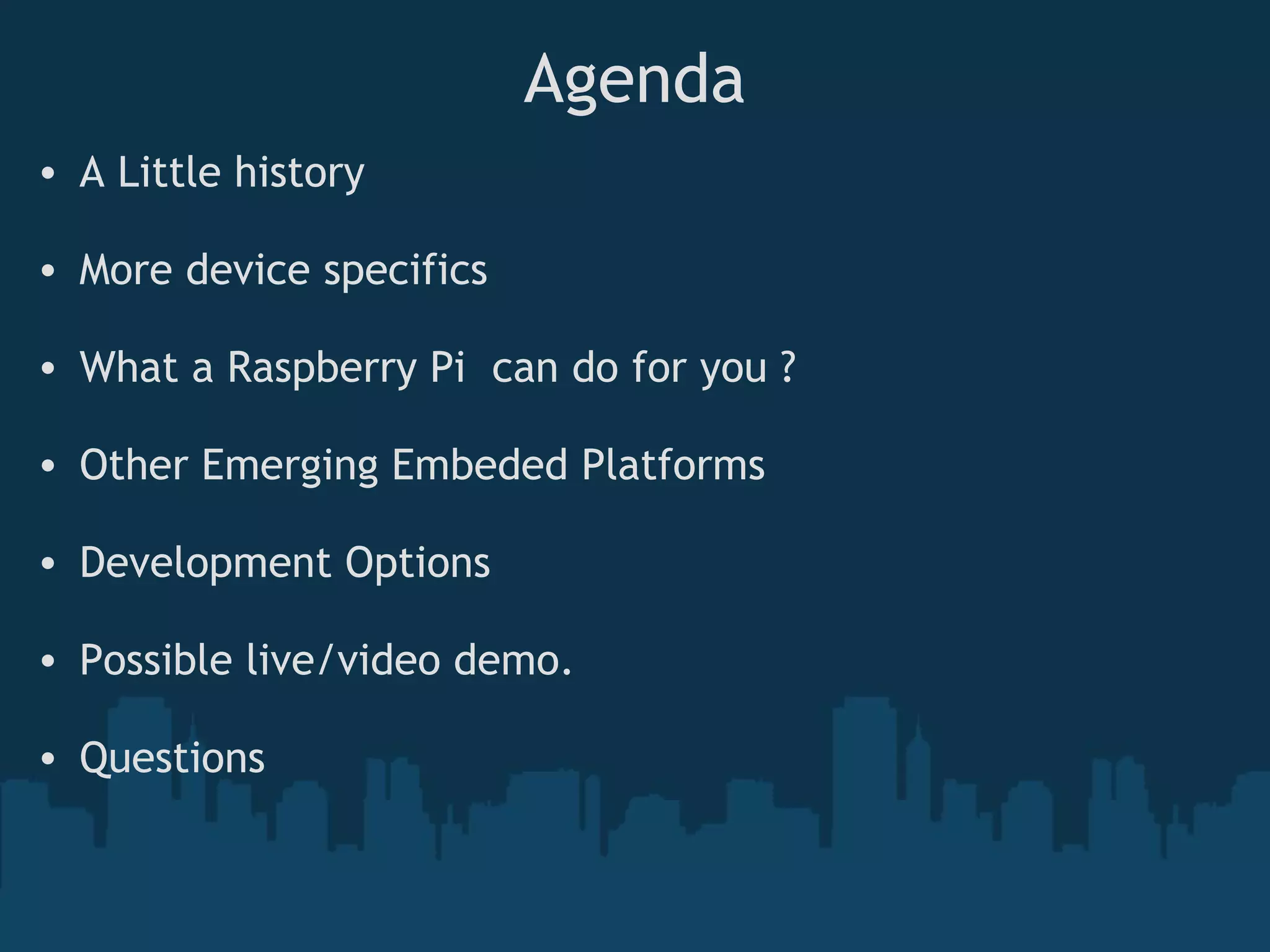
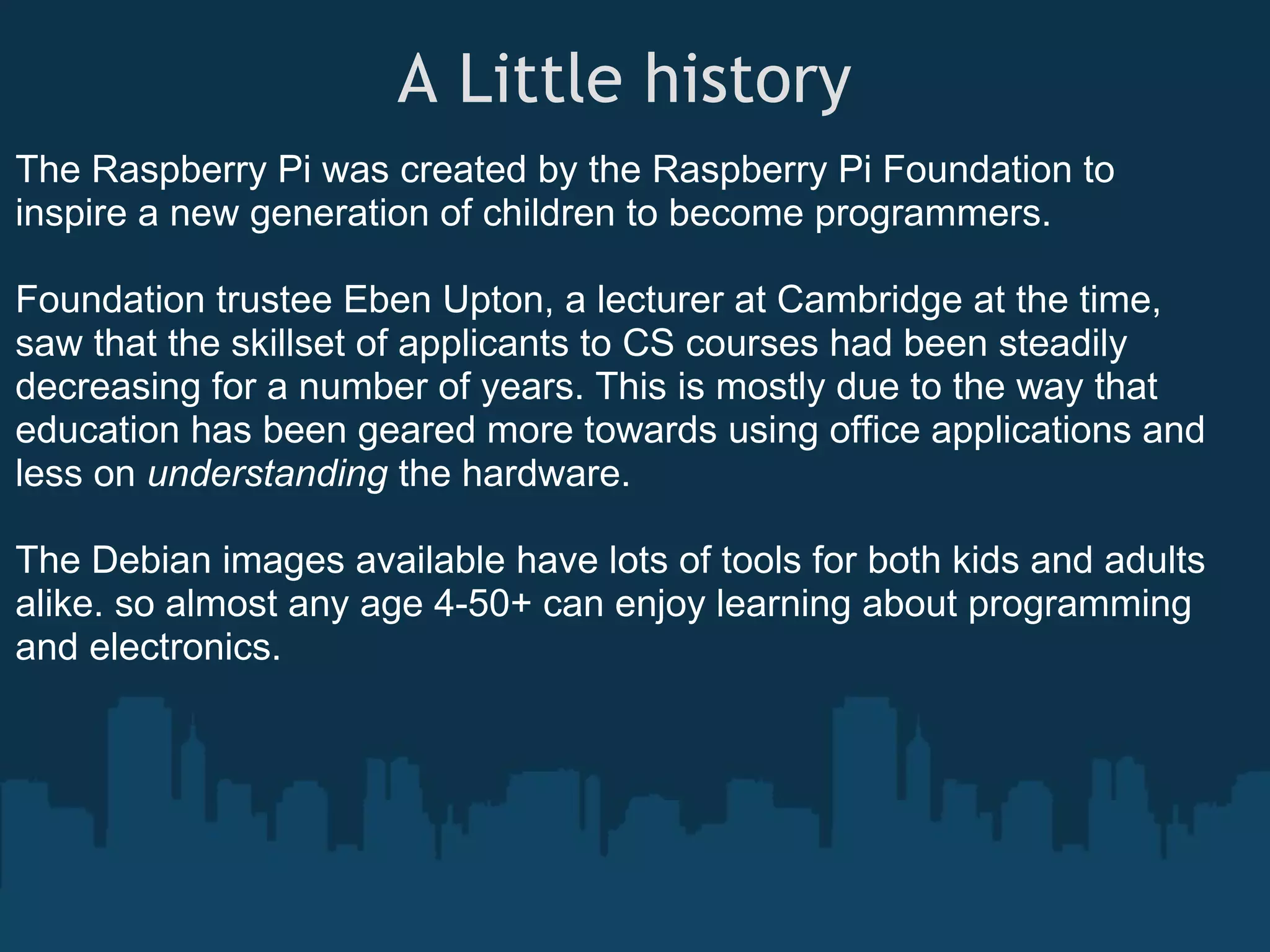
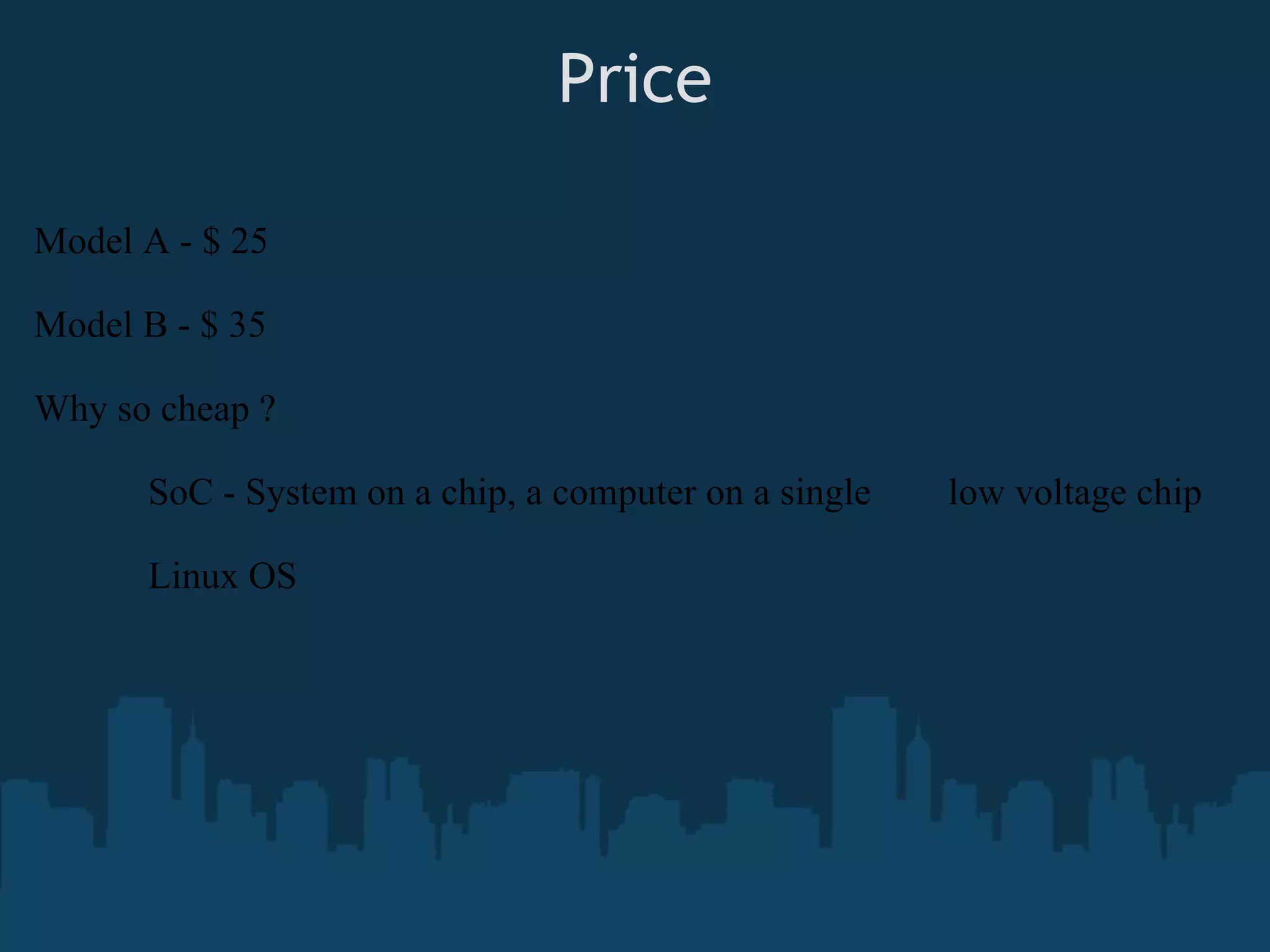
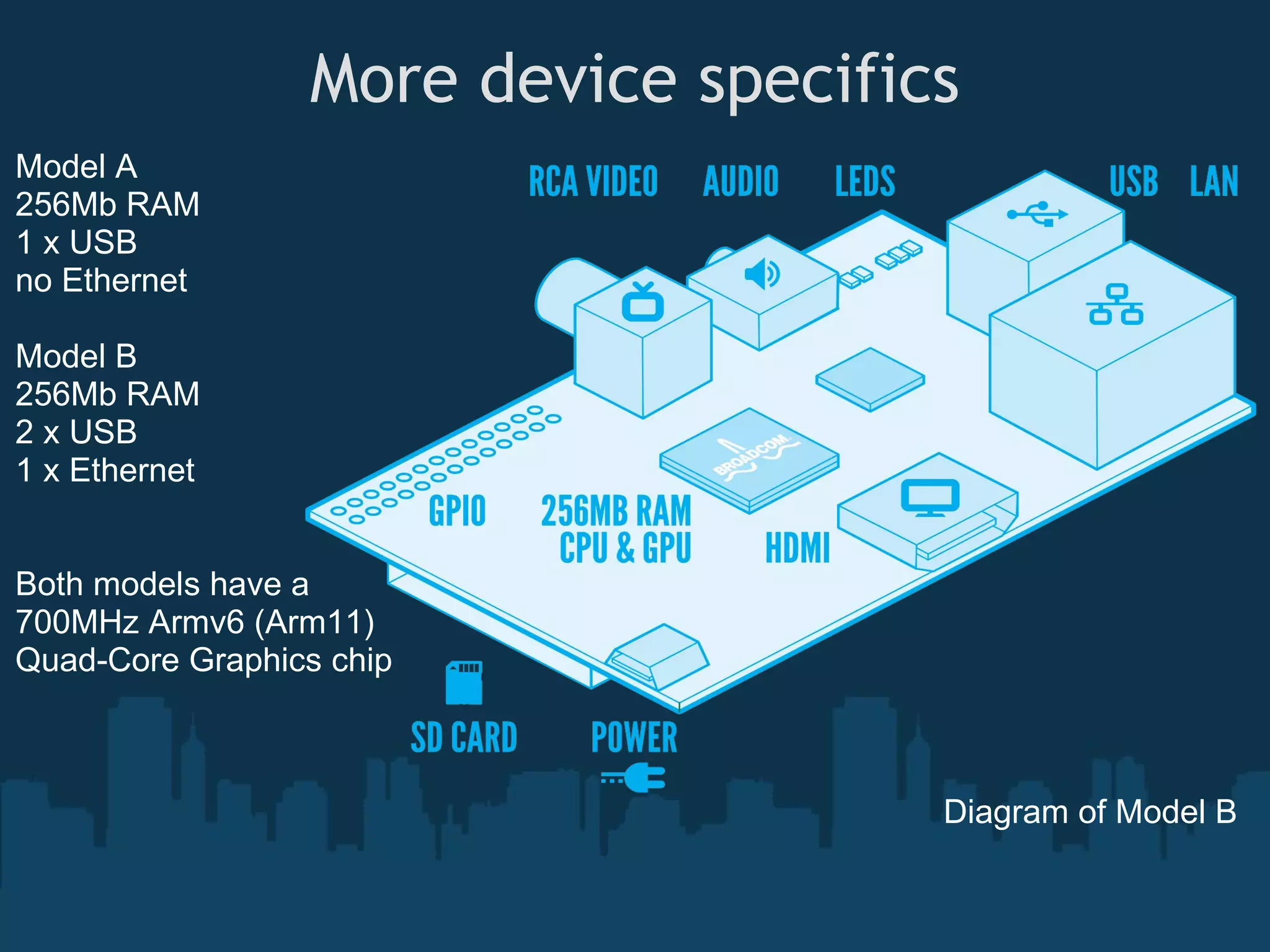
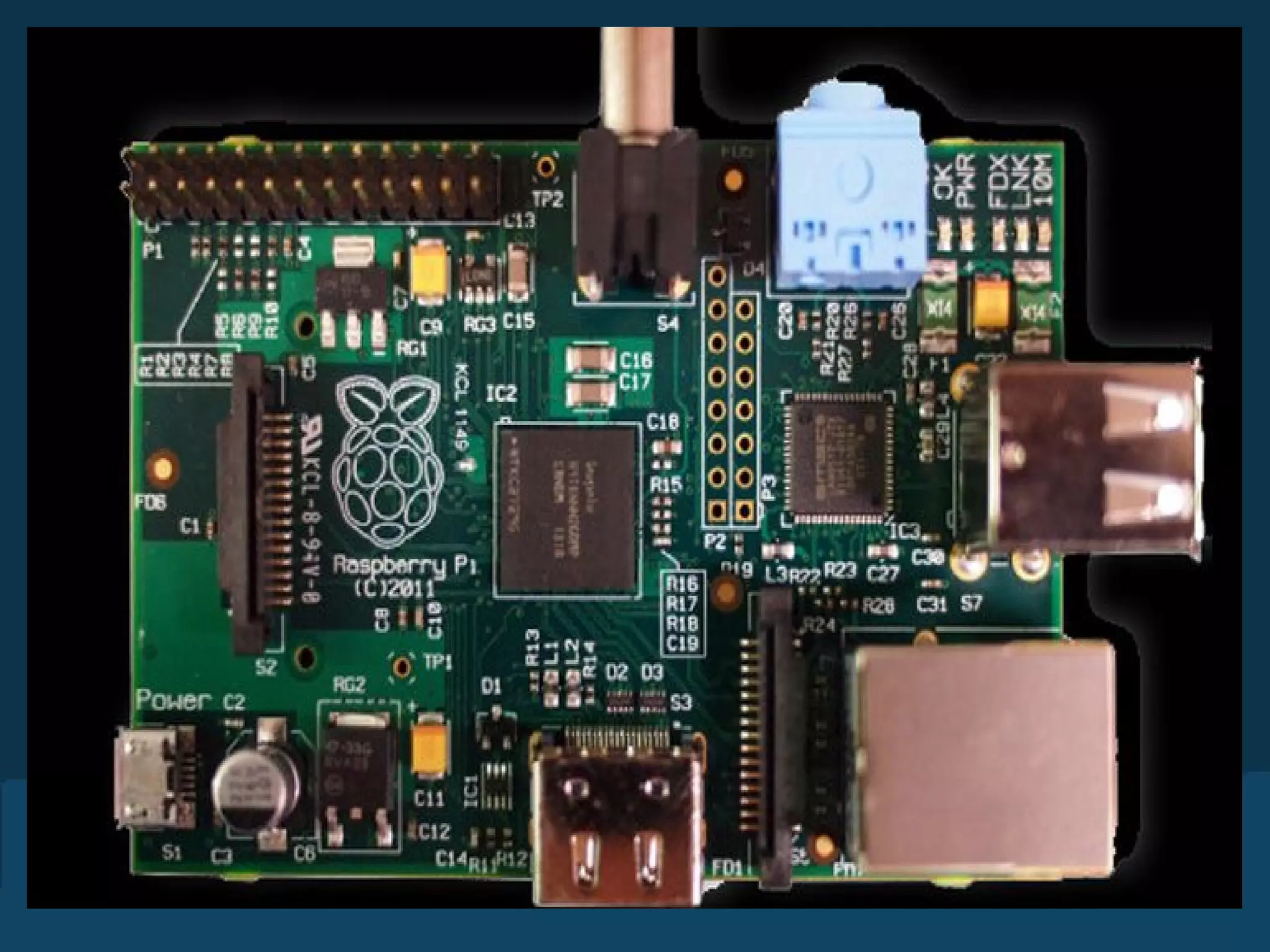
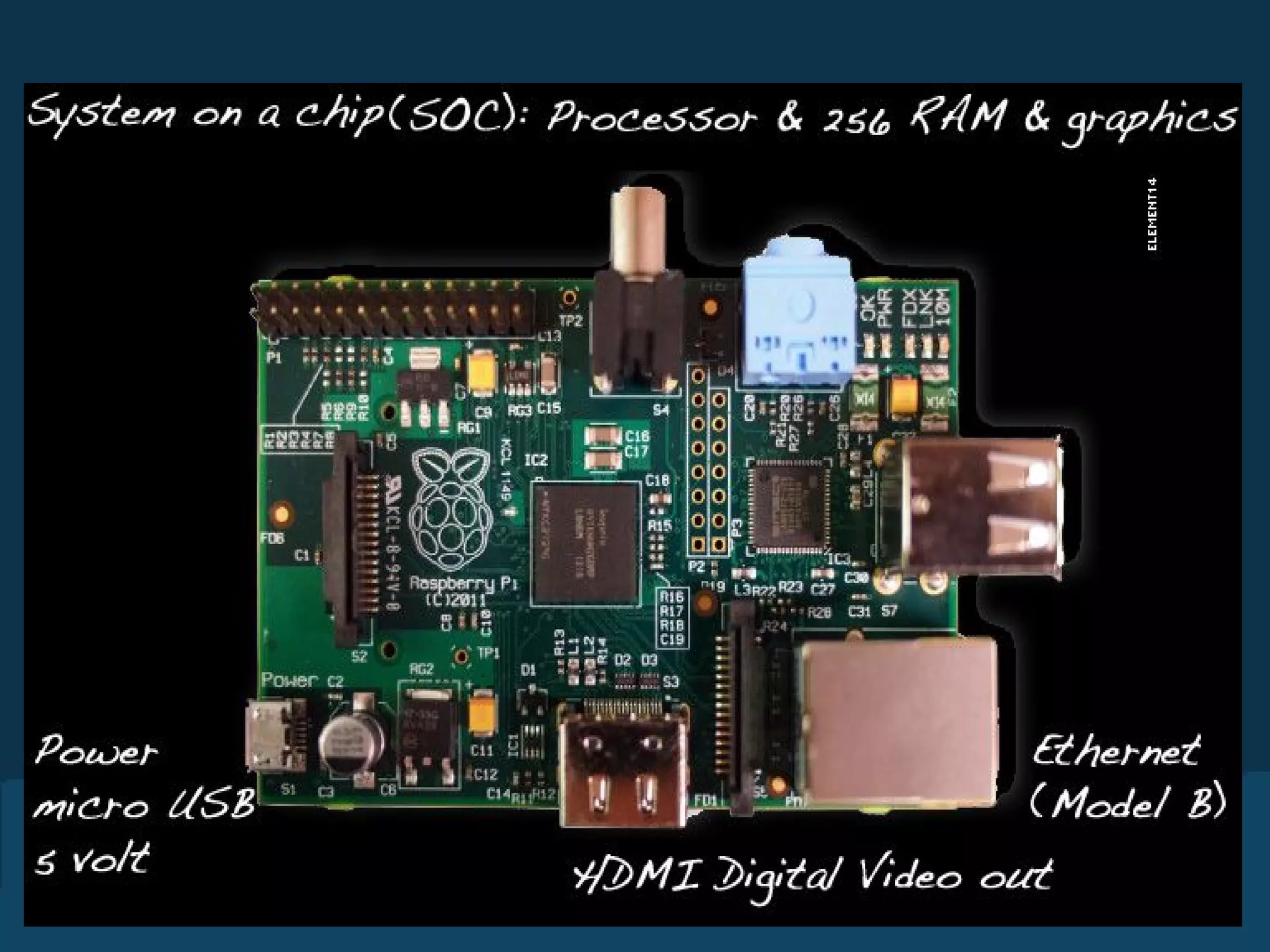
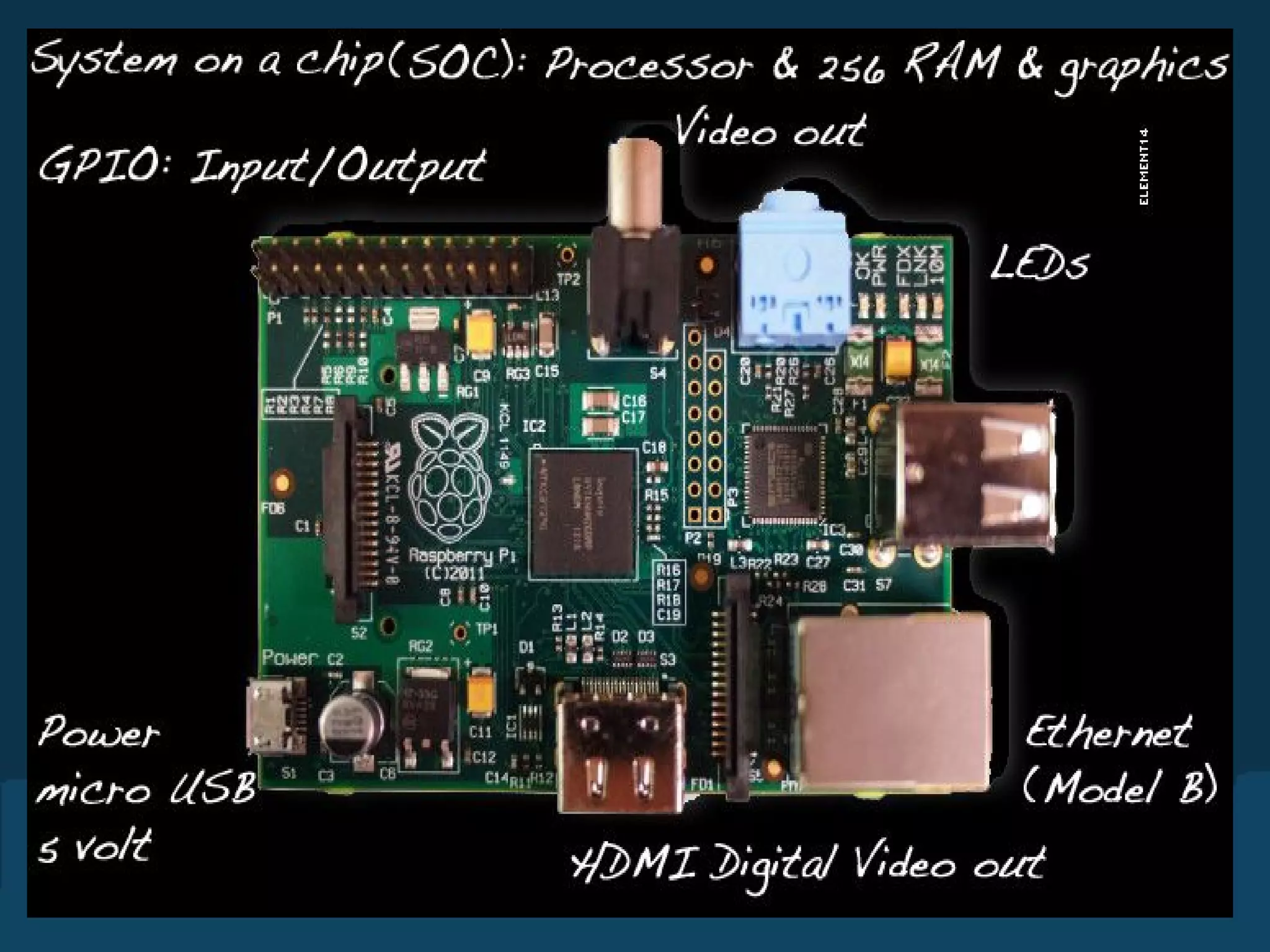
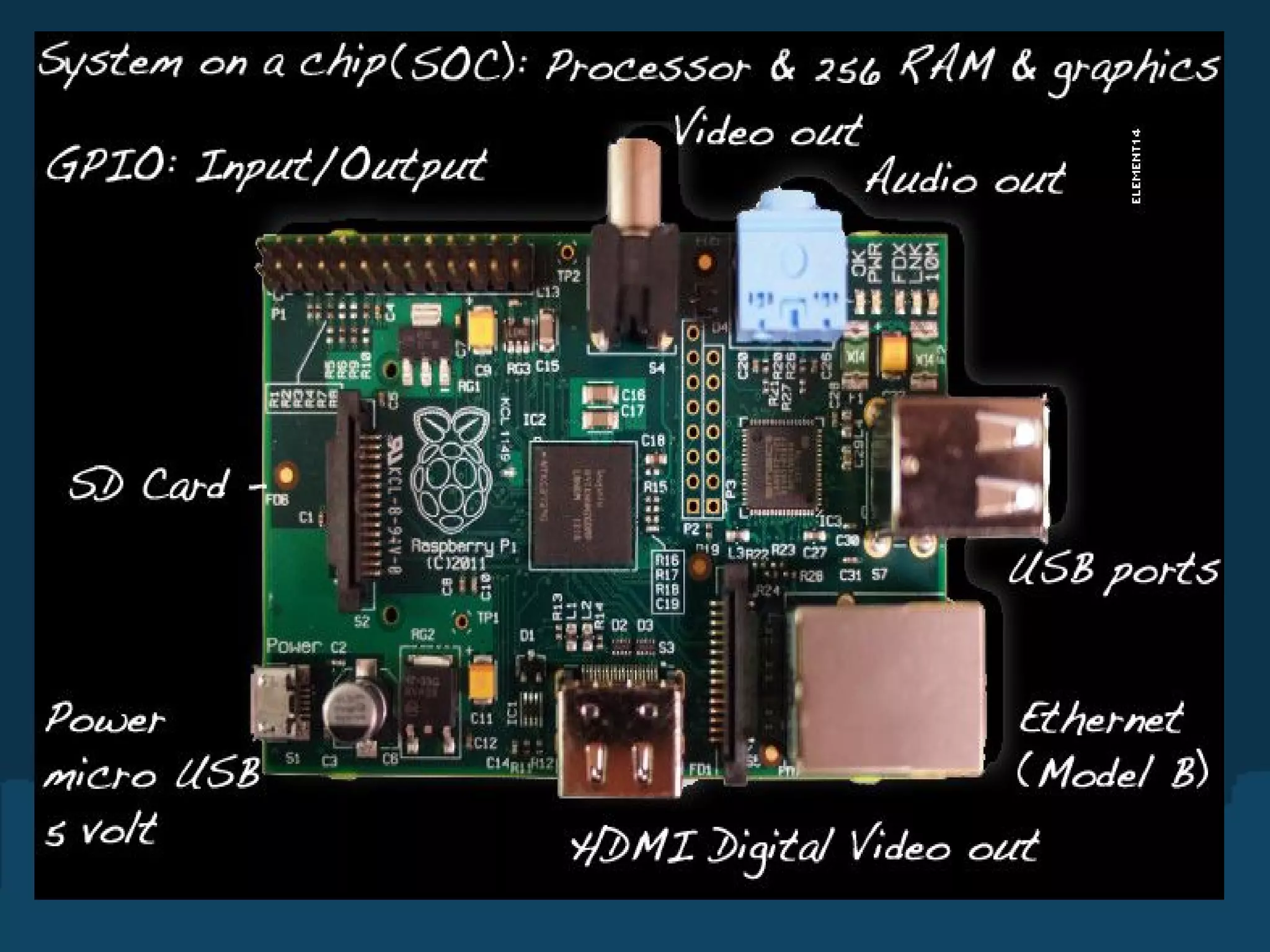
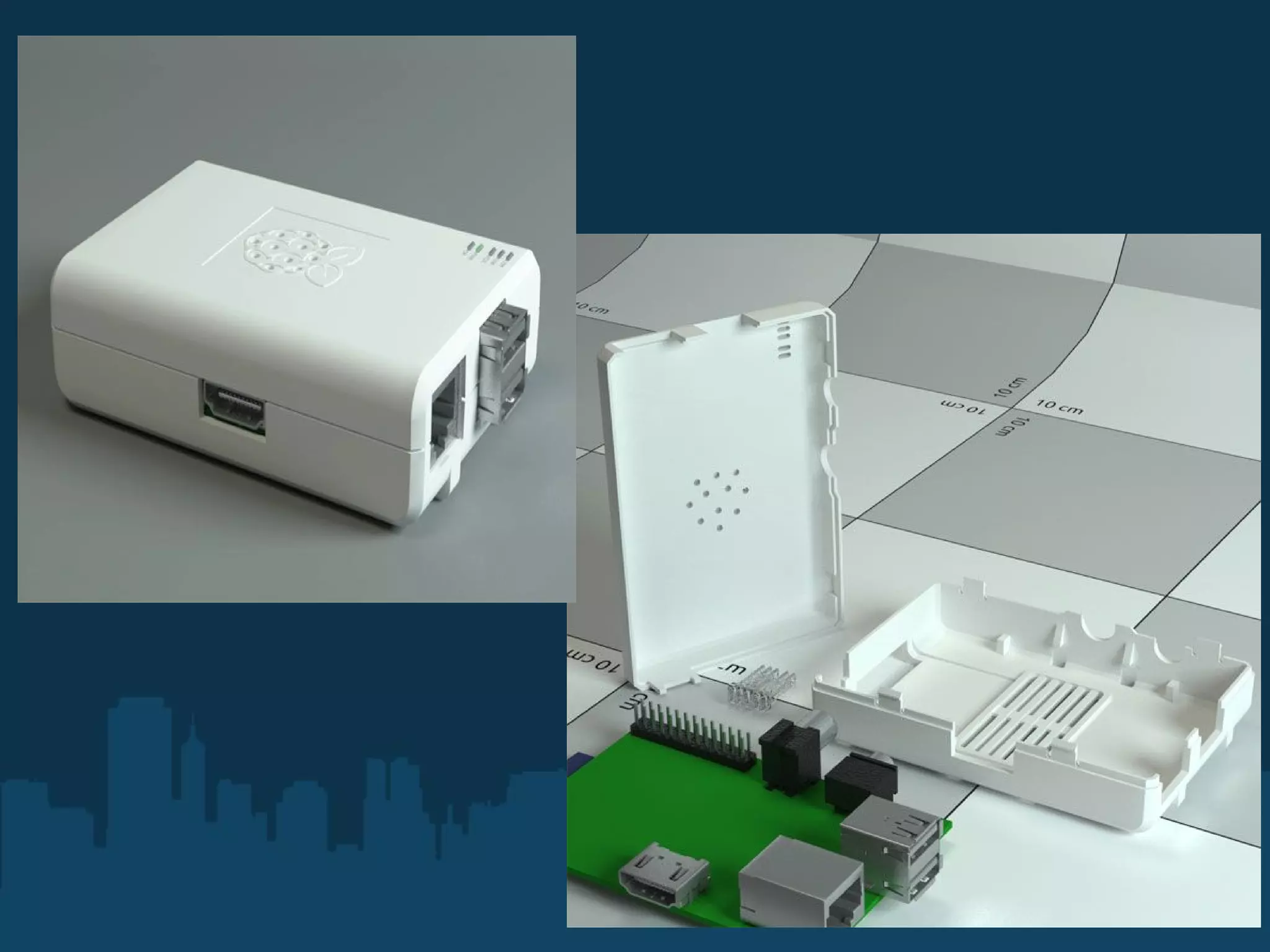
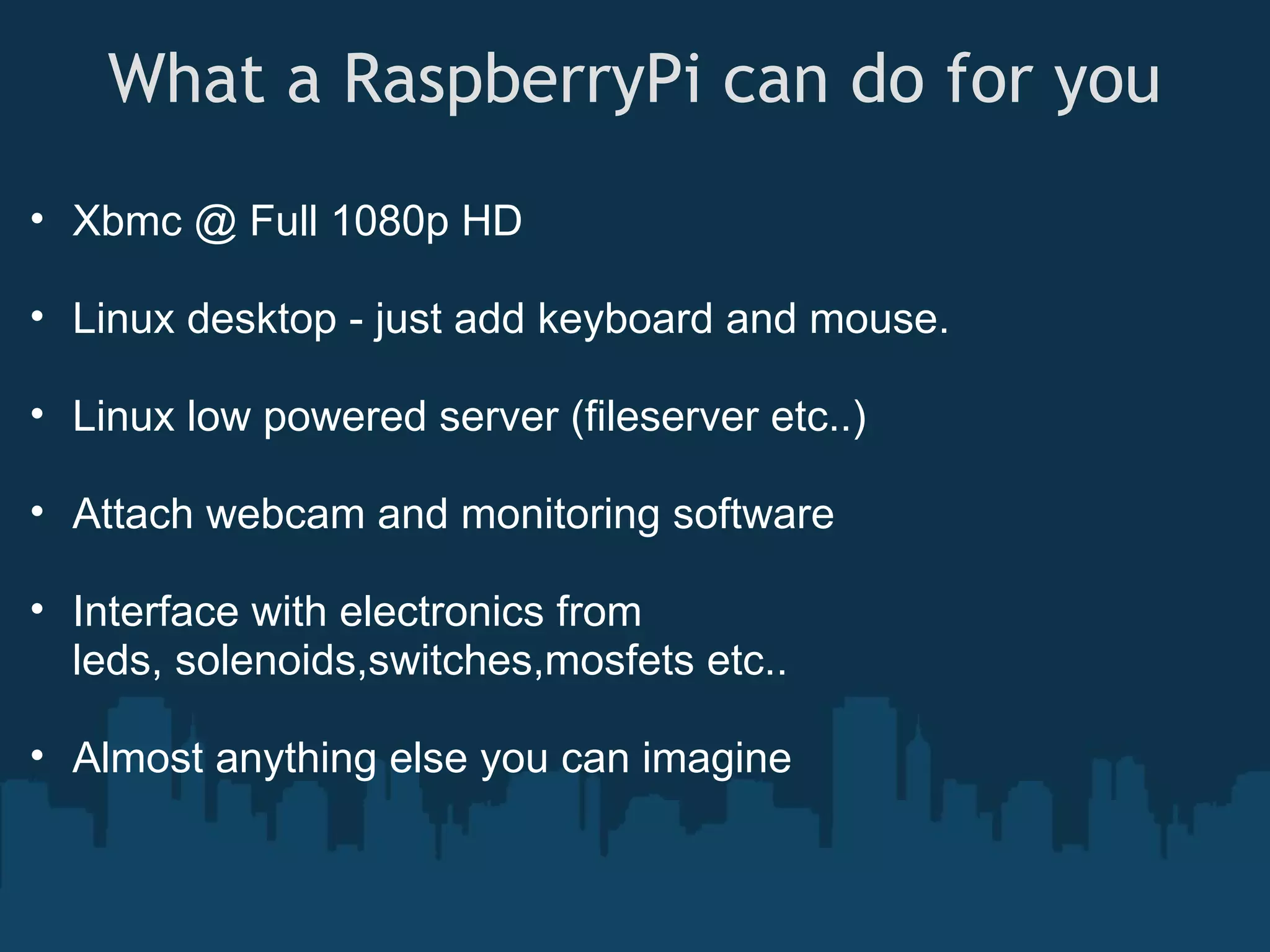
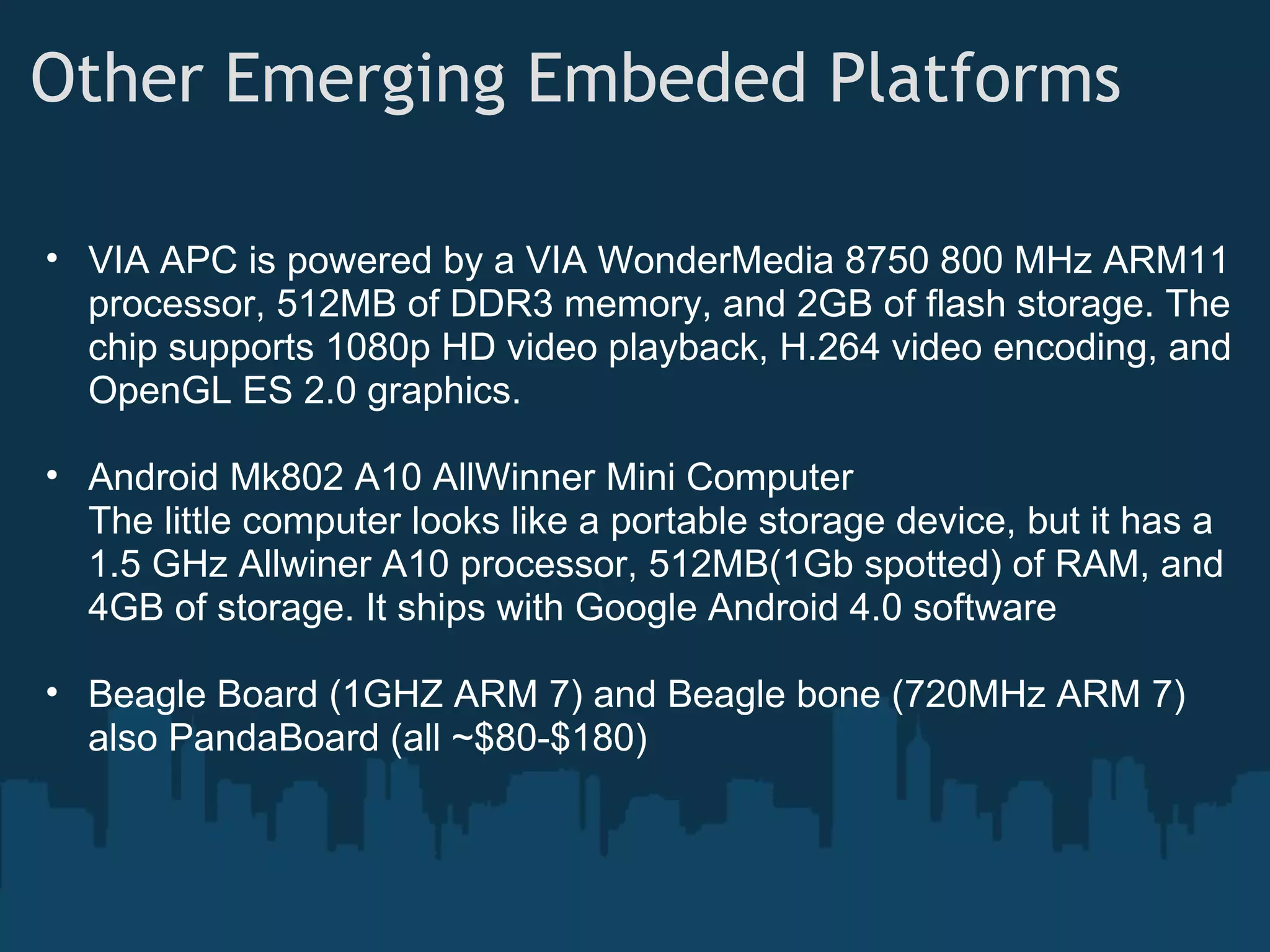
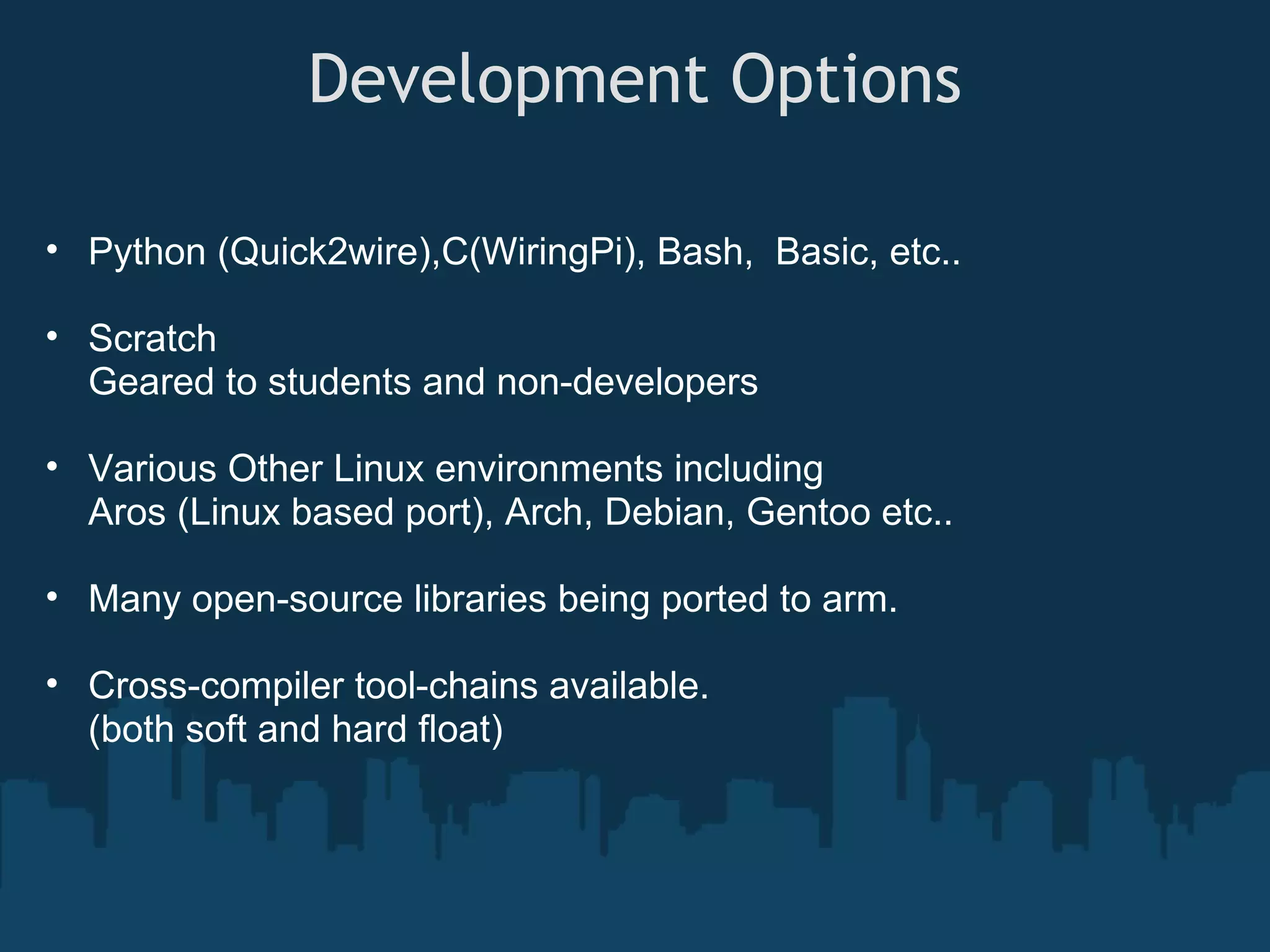
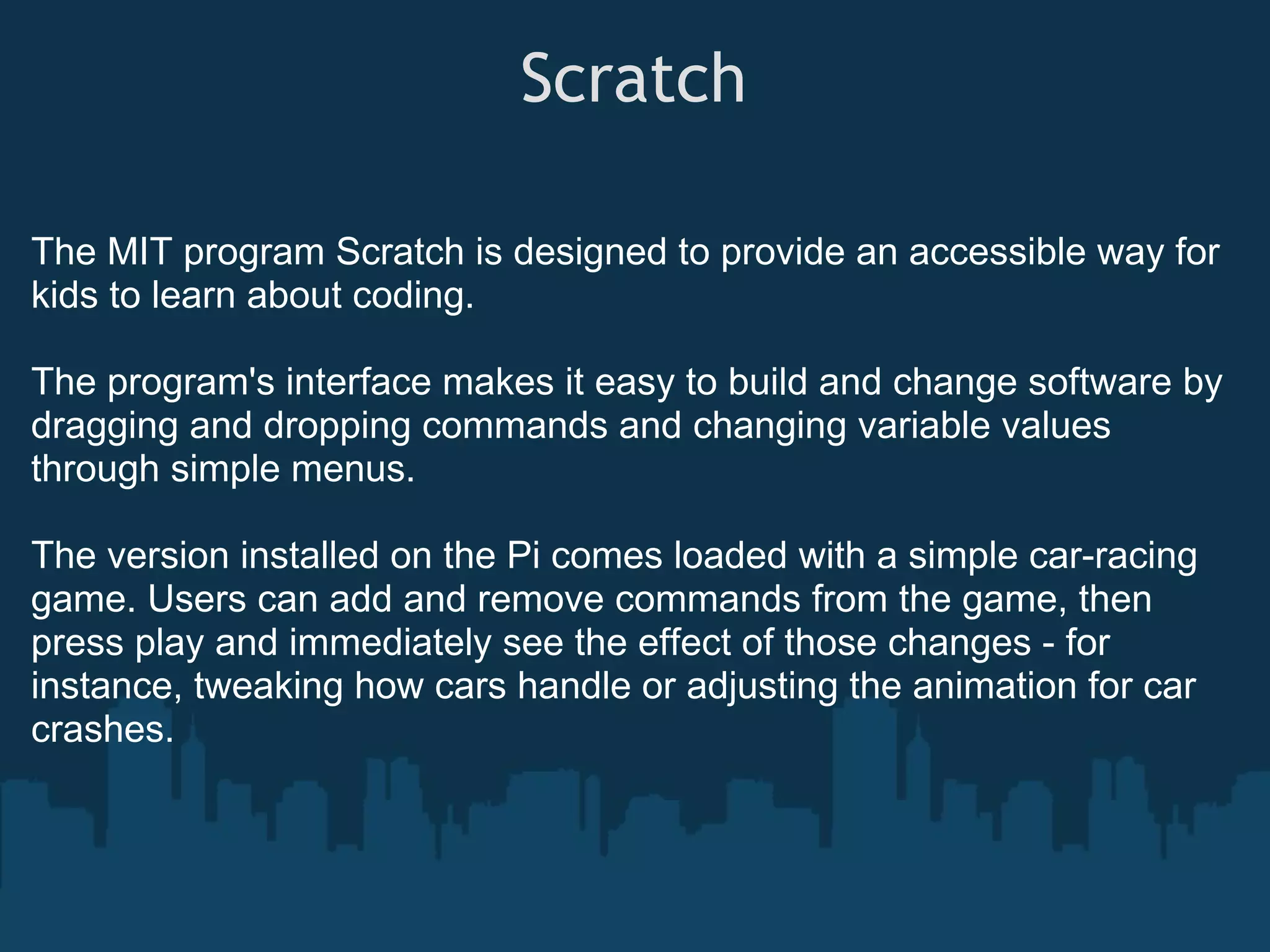
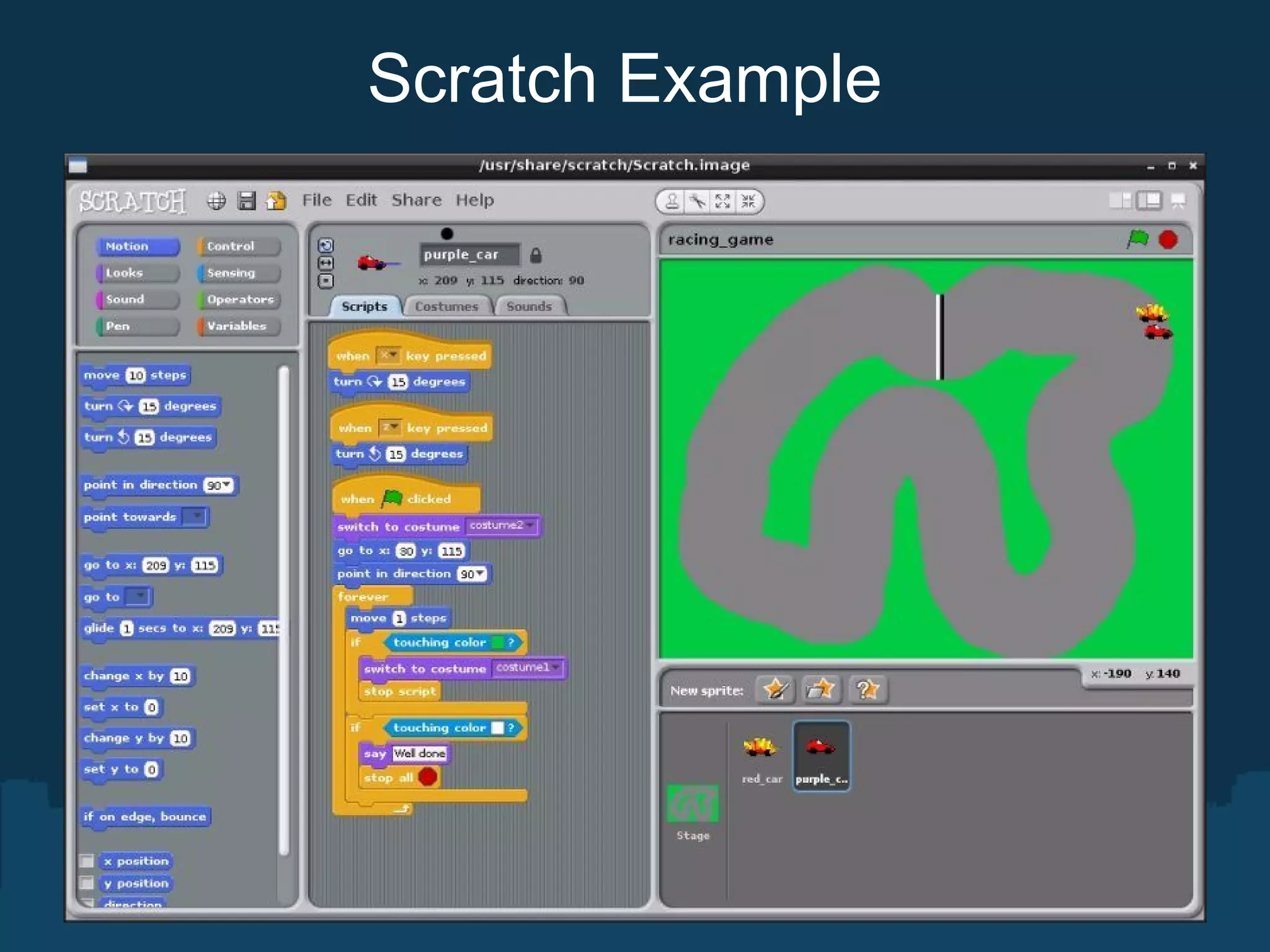
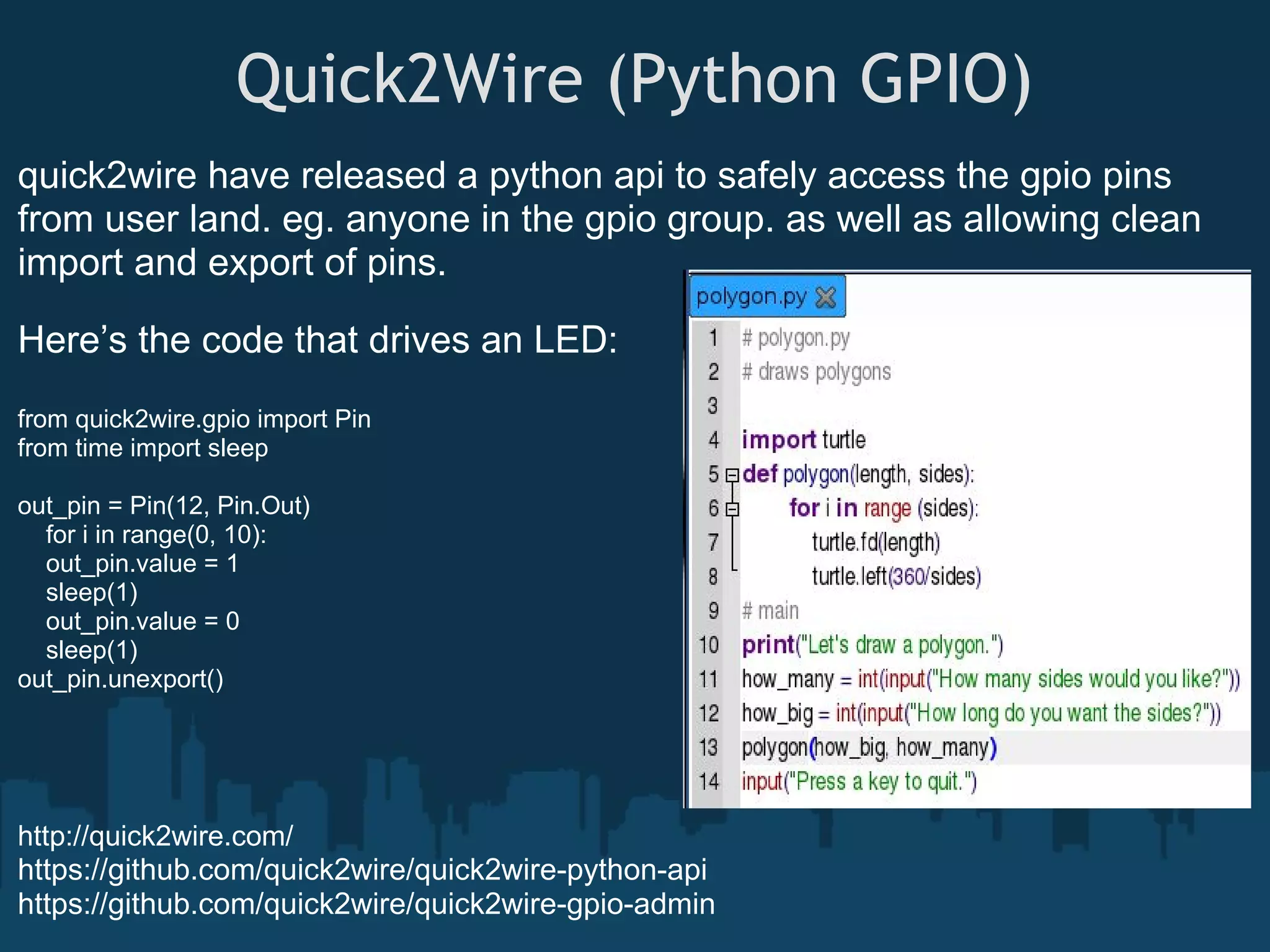
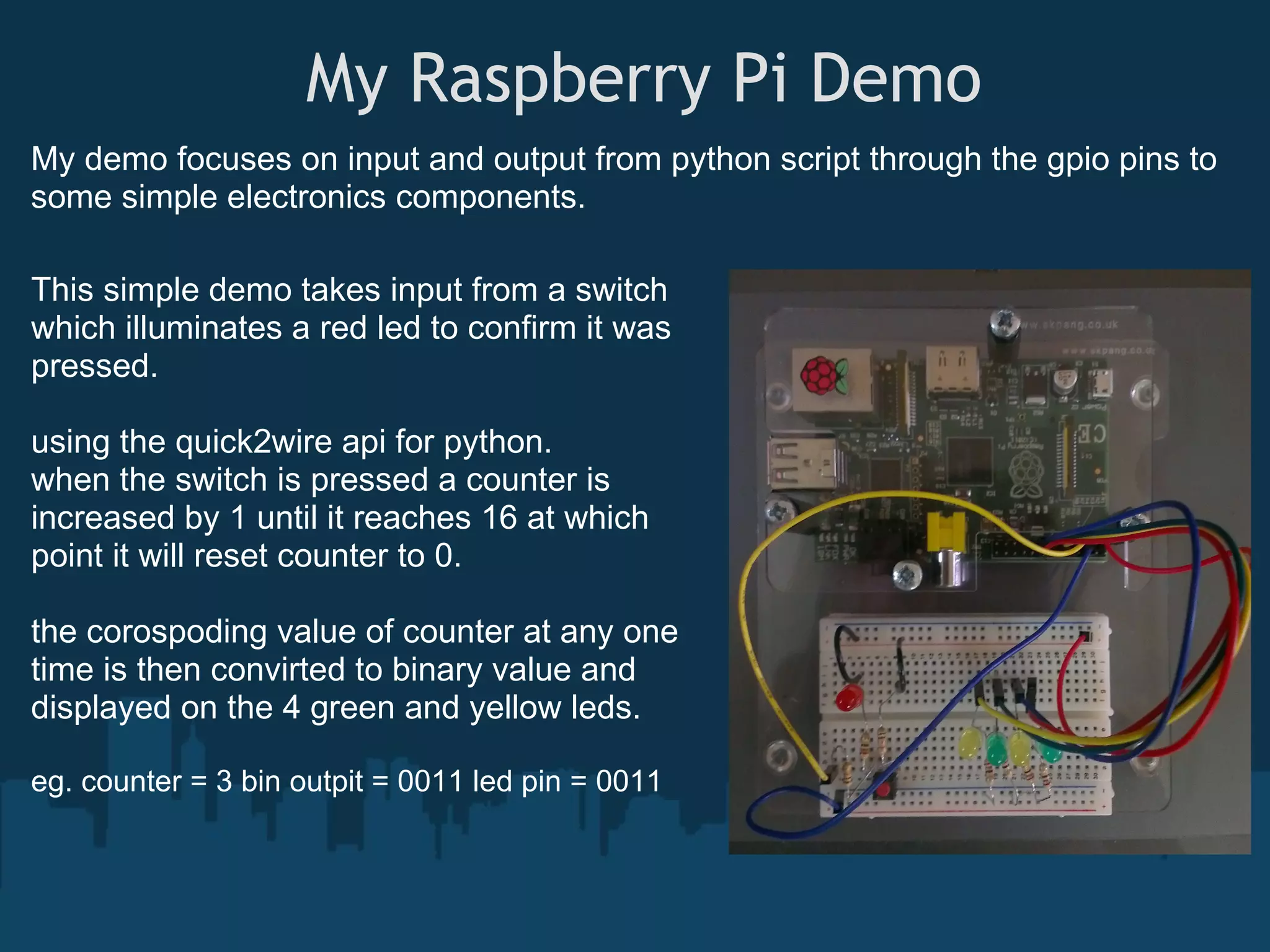
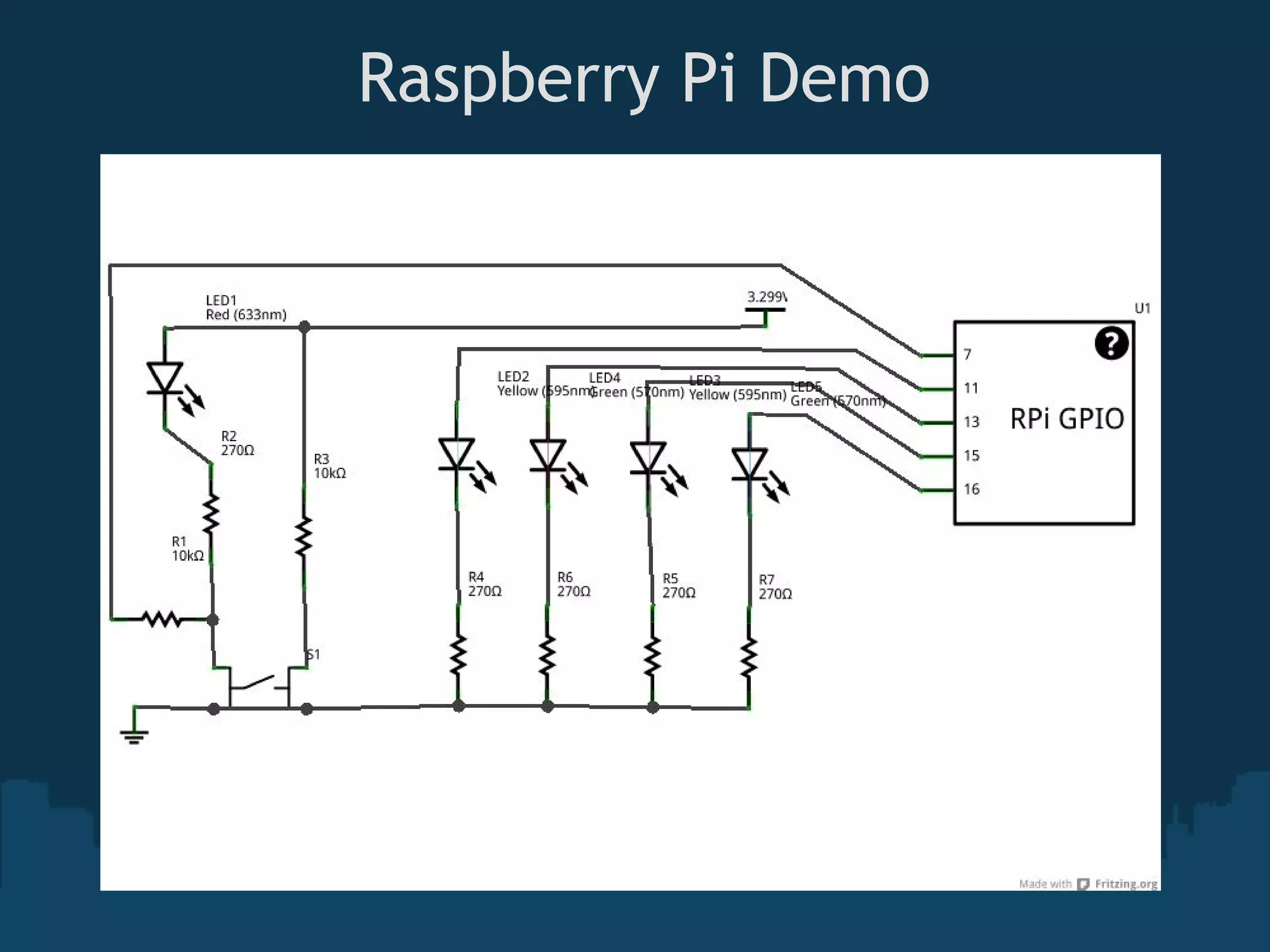
![Raspberry Pi Demo #!/usr/bin/python3 import time # outputs binary reprisentation to 4 leds import string # that matches count. from quick2wire.gpio import Pin binvalue = bin(i)[2:].zfill(4) out_pin4.value = binvalue[-1] # import pins for output out_pin3.value = binvalue[-2] out_pin1 = Pin(11, Pin.Out) out_pin2.value = binvalue[-3] out_pin2 = Pin(13, Pin.Out) out_pin1.value = binvalue[-4] out_pin3 = Pin(15, Pin.Out) time.sleep(.2) out_pin4 = Pin(16, Pin.Out) # trap ctrl+c to cleanly unexport pins # import pins for input except KeyboardInterrupt: in_pin = Pin(7, Pin.In) out_pin1.unexport() out_pin2.unexport() # init count out_pin3.unexport() count = 0 out_pin4.unexport() in_pin.unexport() try: while True: # get input value of button mybutton = in_pin.value if mybutton == False: count = count + 1 # reset at 16 if count == 16: count = 0 rpi-count.py @ https://github.com/azmodie/rpi-scripts](https://image.slidesharecdn.com/intrototheraspberrypiboard-121019024006-phpapp01/75/Intro-to-the-raspberry-pi-board-19-2048.jpg)
